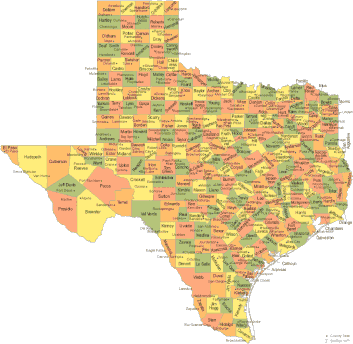|
County websites in our area: Collin County Culvert Forms & Permits http://www.collincountytx.gov/development_services/Pages/culvert_forms.aspx Denton County Culvert Noms & Permits https://dentoncounty.com/Departments/Public-Works-Planning/Applications-and-Permits.aspx Grayson County Culvert Forms & Permits http://www.co.grayson.tx.us/default.aspx?name=tre.payment_culverts When determining who should handle your driveway culvert maintenance, the key is knowing who owns and is responsible for the land on which the culvert is located as is laid out in the town or county’s government policies. Many people avoid researching such policies because they don’t want to deal with all that legal jargon. However, this article equips you with the information you need to navigate government resources concerning culverts. First of all, it will be helpful to familiarize yourself with some key terms concerning culverts and drainage policy:
Now that you are familiar with the key terminology surrounding culvert maintenance policies, it’s time to find the correct city or county department to contact. Usually, the information you’re looking for can be found by contacting the government department in charge of road regulations. A good place to start is your county’s government website. This can usually be found by using an online search engine to search the name of your county followed by 'official website'. In the search results, the website you’re looking for will usually be one of the top results. It should also plainly state the county’s name. For example, when I searched 'Randall County, TX official website' the county’s government website, www.randallcounty.com, was the first to pop up. Once you’re on your county website’s main page, you will usually see a 'Departments' tab or something similar. Click this tab and scroll down until you find the department title related to roads, streets, or drainage governance. The exact name of this department will vary county to county, but it should be pretty easy to spot. On Randall County’s website, the proper department can be found under 'Road & Bridge'. Once you’re on the correct department page, you’ll usually see the names of government officials as well as their contact information. The fastest way to get your questions answered is to call them directly (it’s up to you whether you want to call the head of the department or other available contacts on the list). However, you may also send an email if you prefer. When speaking with (or emailing) a representative from the department, there are a couple of questions you should ask right away. First of all, confirm that you’ve found the correct department by asking them if they are responsible for upholding regulations surrounding culverts. If they are not, ask them to transfer you to the correct department or, at the very least, get the name and contact information for the department you need to call. Once you have confirmed that you are talking to someone who can help you, tell them about your situation and why you want to know who is responsible for culverts in your area. Whomever you talk to will probably want to know your address as well as if you own the property in question, as regulations usually vary depending on who owns the property as well as the property’s location (township, county, subdivision, etc.). They may also ask if you know of any drainage easements on or near your property. Additionally, you should let them know if your culvert’s malfunction has damaged anything on your, your neighbors’, or government property. With this information, the government representative should be able to answer your questions or direct you to someone who can. Even when you have your answer, it doesn’t hurt to do some independent research to confirm what you’ve been told. This involves using a search engine or public files (usually obtainable at a courthouse or other location of public records) involving land development/drainage codes, policies, and regulations. On the Randall County Road & Bridge Department webpage, this information is readily available. It can be downloaded as a PDF via the Road & Subdivision Policy link, found under 'Information' in the page’s left column. If your county’s website isn’t as straightforward, you can politely ask the department representative with whom you speak to direct you to where the policy can be found. There should be no reason they cannot do this. However, if for some reason they can’t help you, you should be able to find the information online by searching the name of your county, plus “culvert policy” or something similar. If possible, find the original policy scanned online as a PDF. Use the Table of Contents to find the section related to culverts and drainage, and read through it. This will help you feel more informed as you move forward in repairing or replacing your faulty culvert. Sometimes, the terminology used in the policy can be pretty convoluted or dull. However, stick with it, and use the key terms from this article to help you. The policy will usually describe who is responsible for different types of properties and culverts, as well as the permits and other steps one should take in order to comply with regulations. In our Randall County example, if the culvert is located on private property, the owner of that property is responsible for the culvert’s upkeep. If a culvert is located in a subdivision, the subdivision developer is responsible for maintaining culverts and must do so in keeping with the city’s code. Meanwhile, culverts on public land are the responsibility of the government. According to Randall County Law and Ordinances, inspectors are required to check all culverts on public land once a year. Additionally, if someone notices a problem with culverts on public land, they should contact Law and Ordinances to resolve it. These are some fairly common regulations. However, every county’s laws are slightly different, and loopholes abound, so do your best to get the information specific to where you live. Best of luck!
Comments are closed.
|
Country RoadsRural drives and private roads are our passion. We post recent jobs, paving techniques, and tips and tricks here. Enjoy! Archives
January 2023
Categories
All
|





 RSS Feed
RSS Feed
